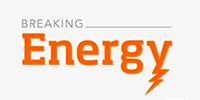 Based on the lithium-ion battery technology that Mercedes-Benz has used to power 80,000 hybrid and fully electric vehicles since 2012, Mercedes Benz residential storage batteries are now ready for sale to customers in the UK. Up to 8 battery modules, each with a capacity of 2.5 kWh, can be combined to create an energy storage system with a capacity of 20 kWh. Industrial applications have even greater scalability.
Based on the lithium-ion battery technology that Mercedes-Benz has used to power 80,000 hybrid and fully electric vehicles since 2012, Mercedes Benz residential storage batteries are now ready for sale to customers in the UK. Up to 8 battery modules, each with a capacity of 2.5 kWh, can be combined to create an energy storage system with a capacity of 20 kWh. Industrial applications have even greater scalability.
Using an energy storage system from Mercedes-Benz Energy, households with their own solar energy systems can store surplus power with virtually no losses. By combining renewable energy sources with a battery storage unit, households can explore the potential of their own “private energy revolution,” as Mercedes-Benz put it.
Prices for residential systems depend on the components of a customized package selected by the customer. A typical system consists of solar panels, a battery inverter, an energy management system, and the Mercedes-Benz energy storage unit itself, plus the cost of installation.
“A network of qualified partners and distributors makes planning and installation easy. At present, Mercedes-Benz Energy is working in the UK with distributors such as Alternergy, Innasol and Wind & Sun, as well as with partners who offer a complete system installation, such as Solar Frontier,” Mercedes notes. “The latter’s network of qualified installers can advise customers on-site, make offers on all components and manage all planning and installation. Stationary battery storage systems are generally installed together with solar panels.”
But do people really want Mercedes-Benz batteries in their garage? Apparently.
“There is tremendous interest in our energy storage units in the UK. We’re very pleased to be able to offer Mercedes-Benz Energy Storage Home to customers here,” said Marc Thomas, Managing Director of Mercedes-Benz Energy.
Click Here to Read Full Article
read more
 Since President Trump’s election to office, his administration has made it very clear that building and restoring infrastructure is at the top of their “to-do” list. The Energy Storage Association and their supporters are looking to turn Trump’s priority into an opportunity for their agenda. To create this opportunity, the ESA, and other supporting organizations, are turning to Congress for assistance.
Since President Trump’s election to office, his administration has made it very clear that building and restoring infrastructure is at the top of their “to-do” list. The Energy Storage Association and their supporters are looking to turn Trump’s priority into an opportunity for their agenda. To create this opportunity, the ESA, and other supporting organizations, are turning to Congress for assistance. LG Chem has formally launched its series of residential battery systems for the North American market.
LG Chem has formally launched its series of residential battery systems for the North American market. As part of its REV program, New York regulators recently
As part of its REV program, New York regulators recently  San Diego Gas & Electric (SDG&E) has signed contracts for five new local battery storage facilities for a total of 83.5 MW.
San Diego Gas & Electric (SDG&E) has signed contracts for five new local battery storage facilities for a total of 83.5 MW. Eos is the first company to accept orders below $100 per usable kWh for a complete DC battery system including battery modules, battery management system, and outdoor-rated enclosure. The company’s price-cap guarantee ensures that future purchases will receive the lower contracted price or any future price for an equivalent volume purchased the same year. It is also offering up to 20-year performance guarantees at additional cost to optimise capacity under a wide range of applications and use cases.
Eos is the first company to accept orders below $100 per usable kWh for a complete DC battery system including battery modules, battery management system, and outdoor-rated enclosure. The company’s price-cap guarantee ensures that future purchases will receive the lower contracted price or any future price for an equivalent volume purchased the same year. It is also offering up to 20-year performance guarantees at additional cost to optimise capacity under a wide range of applications and use cases. Edison International’s utility unit said it has completed the first-of-its kind battery storage and natural gas power systems in Southern California that will help the region backstop increasing amounts of renewable energy and cope with potential shortages after a historic gas leak.
Edison International’s utility unit said it has completed the first-of-its kind battery storage and natural gas power systems in Southern California that will help the region backstop increasing amounts of renewable energy and cope with potential shortages after a historic gas leak. DENVER
DENVER SAN DIEGO, April 19, 2017 – Today,
SAN DIEGO, April 19, 2017 – Today,  About three years ago inside a
About three years ago inside a 



